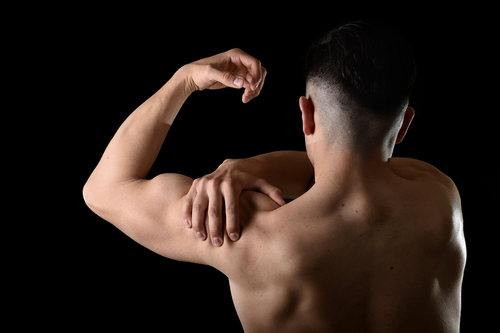Ever think about whether the post-practice wobble is a pointer of a decent exercise or a sign you tried too hard? All things considered, reality lies some place in the middle. While some wellness fans wear their soreness like a symbol of respect, others once in a while feel anything the following day. The two results are totally ordinary and proper. All in all, what gives? Does it truly mean anything? The snappy answer is yes, yet it’s confounded!
Delayed Onset Muscle Soreness
The soreness you feel after an exercise is called Delayed Onset Muscle Soreness, or DOMS for short. While inconvenience is the most discernible characteristic for DOMS, reduced scope of movement, joint solidness, and reduced muscle quality are likewise normal. For a few, DOMS is prompt and goes on for a considerable length of time, while for others; the distress seems one to two days after an exercise and is short-lived. (We’ll get somewhat more into that underneath.)
Some have faith that DOMS is caused by a lactic corrosive build-up in the body, however, this is not valid. Lactate is a side-effect of muscle digestion and is normally cleared from the body within one hour of the exercise ending. In any case, you do cause small tears in your muscles when you work out. These tears are the very things that set off the muscles to repair themselves, which prompts your increases! This micro trauma is likely the perpetrator that makes DOMS.
Factors That Cause DOMS
While the volume of tearing depends on the workload and force of your exercise, there are numerous different variables that add to the measure of soreness (and its planning) you might possibly experience. Hereditary qualities, hydration, combined movement, and warm-up and chill off exercises all have an influence in regardless of whether you’re in torment.
Hereditary qualities have a major impact on whether you feel DOMS. A few people are no-or low-responders, while others are high-responders to the impacts of muscle molding. There’s nothing you can do about that. For instance: Two similarly trained ladies lifting a similar measure of weight amid an activity will feel soreness at a different level the next days in the event that one is a high-responder and the other a low.
Hydration amid and after an exercise session can likewise influence the extent of soreness you feel. Drinking water sometime recently, amid, and after an exercise will offer assistance. You additionally may explore different avenues regarding an electrolyte substitution in case you’re arranging a more serious or longer exercise. Obviously, working in breaks amid your exercise will help too. What’s more, remember, you’ll require more hydration constantly if your area is sultrier.
Do you work out vivaciously in the morning, yet sit for an extended timeframe while at work? This could be prompting the soreness you feel too. The uplifting news here: You may have the capacity to help avert a portion of the discomfort by including greater movement into your day—particularly in the hours following the exercise. Have a go at standing up when you are on the telephone, taking the stairs, stopping in the last column of the parcel, or meandering while your children are at training as opposed to hitting the cheap seats.
How to Help Reduce DOMS
For a considerable length of time, we imagined that static extending (holding a stretch for 40 seconds or more) pre-and post-exercise would eradicate DOMS. Tragically, it’s just not genuine. Research demonstrates that including an appropriate warm-up and chill off can help set up the muscles for the work ahead, which may help in the DOMS division. In any case, they’re useful in any case! Think about these two as evolution periods, instead of exercise “stages.” The warm-up causes you move into exceptional developments; moving from little developments to bigger ranges of movement over time is the most vital element of this pre-exercise stage! At that point, the chill off encourages you to move once more into your day by day life by turning around what you simply did to your body.
Eventually, soreness is not a viable approach to gauge your exercise. Many elements exist outside of your control that influences the sensation. Certainly, for some, escaping a seat is excruciating after an incredible exercise and it serves as a decent reminder that something is occurring! (Isn’t that what we’re all searching for?!) But as opposed to putting significance on soreness—or a scarcity in that department—concentrate on how an exercise makes you feel at the time and once you’re finished. Set objectives in light of performance improvement versus the measure of muscle alleviation cream you experience! Exercise in the morning is good for health. If you want to join any nearby gym, first check its reviews and then go for the membership or if you are looking to get our own gym then why not check out the various Gym For Sale in your neighborhood and start your own business, and work for not ony a healthier you but a healthier world.


